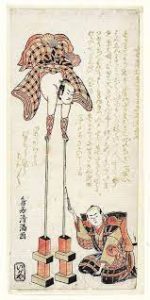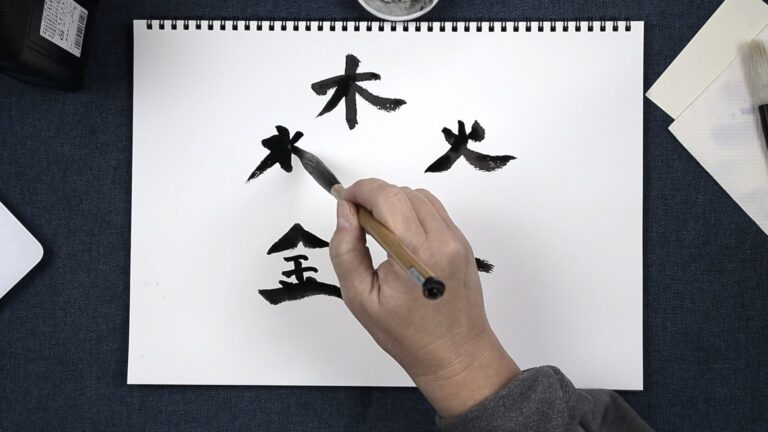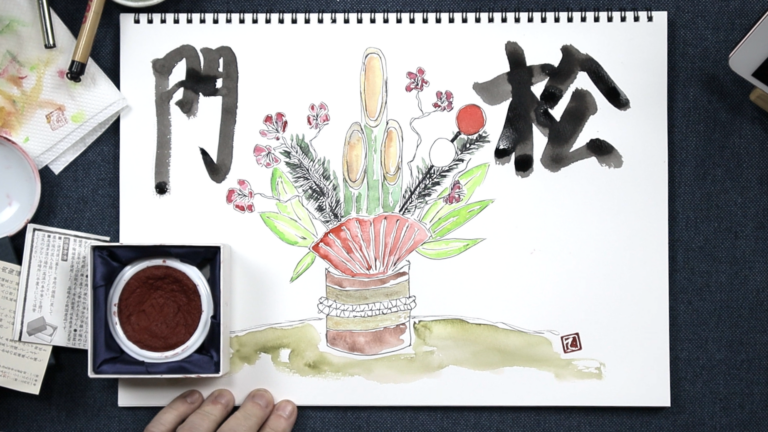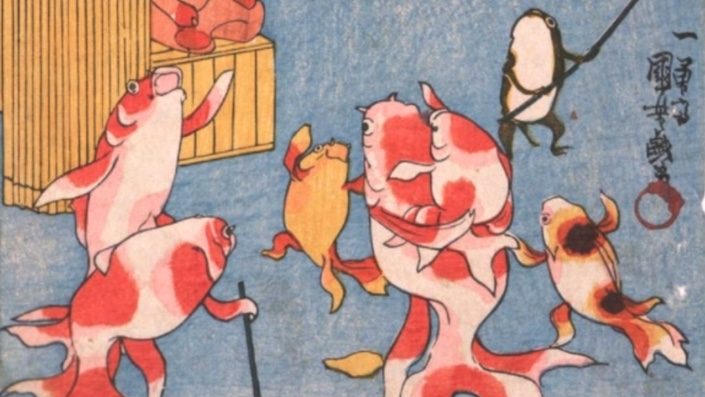
A misemono is like a carnival, museum, zoo, and freak show all rolled into one. Here you could see exotic animals, buy cure-all medicines, and check out mermaid mummies among many, many other thrills.
Sa sa sa sa~, haitte, haitte, mamonaku hajimaru you!
さあさあさあさあ入って入って、間もなく始まるよ~
That right there is called a tanka. It was one of the ways you were enticed into stepping past those high reed walls into and an Edo Era freak show.
They were called misemono (見世物) which translates as show or exhibition. You can also see them called misemono goya (見世物小屋) which adds hut or shack to the end of the word. Exhibition hut. Show shack. However you want to refer to it in English is fine, but a misemono for hundreds of years had a lot going on. Part museum, part carnival, but with an overall vibe of what we know today as an old fashioned freak show.
Remember in the last episode I talked about ningyo (人魚) merpeople and the Fiji mermaid mummies? Well, if you were an Edoite and you wanted to see one, a misemono was just where you went to gawk.
Let’s learn more.
News
Hey hey, how are you? I’ve got a couple pieces of news I wanted to relay before we getting into weird territory.
First, I’m always giving virtual hugs and fist bumps to all my patrons who make the show possible. Remember my little of goal of getting 300 patrons by the end of the year? Well, we’re up to 242 supporters which is closer to the goal and has got me thinking about doing something special when we reach three hundred. What to do, what to do?
Join Our Discord Server
Second, Audio Richard has gone above and beyond his call of duty by setting up an Uncanny Japan Discord server. If you’re already a Patron and know what Discord is, check out the show notes for this episode at uncannyjapan.com and there will be a link to a tutorial on how to connect your Discord account to your Patreon account.
If you’re not a Patron but already know your way around Discord, there’s an invitation link in this episode’s show notes ( <– This link doesn’t expire.) and you’re welcome to the join the party, but there are some channels that won’t be available to you–behind the scenes stuff, previews, recipes, VIP chat, that kind of thing. If that makes you feel left out, well then become a Patron to maximize your fun!
If you have no idea what Discord is, it’s an app for group chat. Google “What is Discord?” for more information, and we hope to see you there.
Our Three Nominations for the New Jersey Web Fest
And lastly, as I record this the New Jersey Web Fest is going on and Uncanny Japan’s Tanuki Buttons episode was nominated for three awards. Outstanding Comedy, Best Series Premise (narrative fiction), and Best Leading Performance. I’ve been listening to the other shows nominated and holy cow they are so good! Like teams of people doing amazing work making these shows. Which makes me wipe a couple tears that the two of us were chosen to rub shoulders with these cool cats. I’ll let you know how it turns out. But if you want to peek over on the New Jersey Fest website you can check what’s going on there.
With that out of the way, on to the show.
When did Misemono Start?
Misemono. For at least 200 years during the Edo Era through to the early Meiji period, the misemono was a quite well known, popular and dare I say low brow form of entertainment. It was a show or exhibit held in urban, well-trafficked areas or very often on the grounds of a temple or shrine. And while I just said lowbrow, I find it interesting that it was frequented by all levels of society. It had something for everyone, as you’ll soon learn.
Actually, a version of the misemono has lasted all the way up until modern times. But they have changed significantly. Things you could do back then, you just can’t do now. And that’s a good thing. Except just as recently as the 2000s one such show suffered the death of a performer and closed it’s proverbial doors. I think I read elsewhere that there is only one show still continuing the tradition today. But it’s hard to know for sure.
Besides, I don’t want to talk about modern day misemono. I want to talk about the old-timey ones. Let’s concentrate on the 1600s. 1700s, and 1800s.
What is Misemono?
One definition I liked states that: “A misemono displayed the rare, the horrible, the obscene.” Which sounds about spot on.
Of course there were other forms of entertainment, think Noh play and Kabuki, but they were refined and expensive. A more accessible way to spend an evening was at the traveling misemono which mixed together elements of circuses, museums, zoos, and yes, freak shows.
They were different sizes from small to largish and lasted from a couple days to months. The simplest setup were several reed screens put up to shield the non paying visitors’ eyes, some benches inside, and a stage. These type could easily be disassembled at the end of the show and thrown together again the next day. Larger misemono had sturdier board fences and wooden huts inside to hide various attractions. You’d have an entrance fee, then an extra fee for the more extravagant shows.
Let’s say a misemono is coming to your town. What happens? Well, first they set up, then someone takes flyers to the barbershops and public bathhouses, places where a lot of people frequent to get the word out. But they also had these long banners all around and on the roof of the exhibit to further lure curious bystanders inside. Then when the misemono opened, there was the tanka that started the show, the sideshow barker as it were.
What Types of Entertainment?
Let me give you an example of what you could see inside a misemono. You had your tall people (like the 7 foot 3 inch or 220 centimeter tall woman named O-Yome), and your very short people. Your women who did snake dances called Kan Kan. There were acrobats and jugglers, and archers who shot arrows with their feet.
At a certain misemono you might catch a sword swallower, a snake charmer, or a tortoise tamer. There was at least one misemono that had constructed a kind of mechanical snake that undulated of its own accord. There were kelp sculptures.
Not just weird stuff, but incredible craftsmanship was also on display, like intricate baskets made into fantastic shapes, items crafted out of mother of pearl, giant Buddhas. Kelp sculptures.
But that’s not all. The obake yashiki / haunted house called yabu 藪 was also popular. And something I’d personally be interested in, something called a kougushi or kagushi (香具師) who were incense practitioners. I imagine them elegantly mixing together different combinations of powders and resins, I don’t know, like sandalwood and cedar, and burning them for a crowd of people who would inhale deeply these magical and exotic fragrances. Oh, there were also ubiquitous peep show. You don’t want to know what went on in there. But you can imagine it was quite the free for all, exciting, weird, scary, lascivious, enchanting. The misemono had it all.
There was one story about a misemono that used to have two men suddenly break out in a fight and feign a duel with swords while balancing on meal trays. At the end of their harrowing show they’d announce that they just did that to delight you. They were actually here to sell you some medications.
Then they’d whip out two little paper packets filled with powder. This one is our Resurrection Elixir, one of the men would announce. It is a family secret and it cures stomach cramps, food poisoning, sea sickness, drunkenness, and excessive gas from both the mouth and the intestine.
The other man would then shake his little bag of powder and declare: This one fixes decayed teeth and eliminates every noxious odor from your mouth. The audience would be like what’s not to trust about these two guys and they’d buy a bunch of medicine before hurrying off to the next show.
It wasn’t all about watching though. You could get your haircut, get a massage, buy toys for the children, buy sweets like something called white jade and an agar-agar jellied dessert that seemed to be a whole presentation in and of itself with the candy maker dangling long strands from a second story window. Or if you wanted you could nibble on tempura, gobble up stuffed inari pouches, or can I interest you in some fried eel livers?
Maybe you need your fortune told. Well, you could find just such a person to do that. They be walking around the grounds with lanterns attached to their collars.
Animals You Could See
As other cultures imposed themselves on Japan, there were also introduced very curious animals never seen by the Japanese people before. Exotic animals like peacocks, tigers, wolves, parrots, porcupines, a donkey, how about a five-meter or seventeen-foot long giant squid, and camels.
A funny side note about the wolf. It escaped once from its cage on Ryougoku Bridge and sent the entire city into panic.
Let’s go back to camels, too, for a minute. Camels were really popular and the most expensive of the animals to see. To give you an idea, it cost about 8 mon (15 cents) to get into a misemono with special exhibitions being extra. The camel exhibit alone cost 32 mon (or 55 cents). Still pretty cheap compared to Kabuki or Noh, but compared to the kelp sculpture and tortoise tamer, a little pricey.
Let me tell you about the time a show once hauled in a dead baby whale that had washed up on the beach in Kamakura to show in Okuyama. That’s about 34 kilometers or 43 miles. By the time it got there it was nice and rotting. The poor thing stunk so bad only the very brave dared enter to marvel at its decomposing corpse.
Hoaxes, too, of Course
Now you can’t have a misemono with the hoaxes. A unikooru or unicorn showed up in 1836, its story was that it was indigenous to the Sweden Sea. I couldn’t find anything about tying some rando horn to a horse’s forehead, but I’ve got an image in my head.
One of my favorite exhibitions was the wild and rare diminutive tiger that toured for a while. This unusual beast just happened to be the same shape and size of a domestic cat. As not to hear the tell-tale meows of little feline, there was ordered a constant musical ensemble to be playing nearby when customers were viewing the animal.
Let’s not forget one of the most famous strange beasties to appear at a misemono, our friend the Fiji Mermaid mummy. But she wasn’t alone, there were also oni mummies, kappa mummies, and dragon mummies.
It’s said that what all misemono had was something rare or extraordinary, an enclosure, a fixed price of admission, and a fanciful text for the exhibitor.
For example, way back in 1449 there was a woman labeled the White Nun who traveled around Kyoto garnering attention. Now it’s assumed she had albinism, but at the time it was a rarity. The story told around her was that she had become this way upon accidentally eating some merperson’s meat. Remember what we said about that in the last episode. Immortality.
My Favorite Misemono Story
Finally, I want to pass on my absolute favorite story from all that I read about misemono. This man and I, we could have been besties. So there was this man who joined a misemono. It sounds like he wasn’t particularly exceptional in any way, but that didn’t stop him. He didn’t give up. Sure he could have learned to paper mache incredible bonsai trees, juggle with his feet, or sculpt seaweed in an image of the Buddha, but no. My hero covers himself in soot, puts a rope around his neck and stands outside the misemono. There he starts announcing to all the passersby that he’s a wild bear and he’s just been captured in the province of Tonba. Also, if you gave him a little money he would growl and paw the ground.
If you want to read more about the misemono check out Andrew Markus’ article The Carnival of Edo: Misemono Spectacles From Contemporary Accounts, published in the Harvard Journal of Asian Studies. There is a wealth of good stuff in there. I’ll put a link up on the website.
All righty then, it looks like we’ve come to the end of our show. I want to thank you all for listening and leaving reviews and spreading the word about us. You have a wonderful day. And I’ll talk to you in two weeks.
Credits
Intro and outro music by Julyan Ray Matsuura
Happy breeze by chilledmusic
Link: https://filmmusic.io/song/7988-happy-breeze
License: https://filmmusic.io/standard-license







Love this! I never want to stop listening. Thank you.